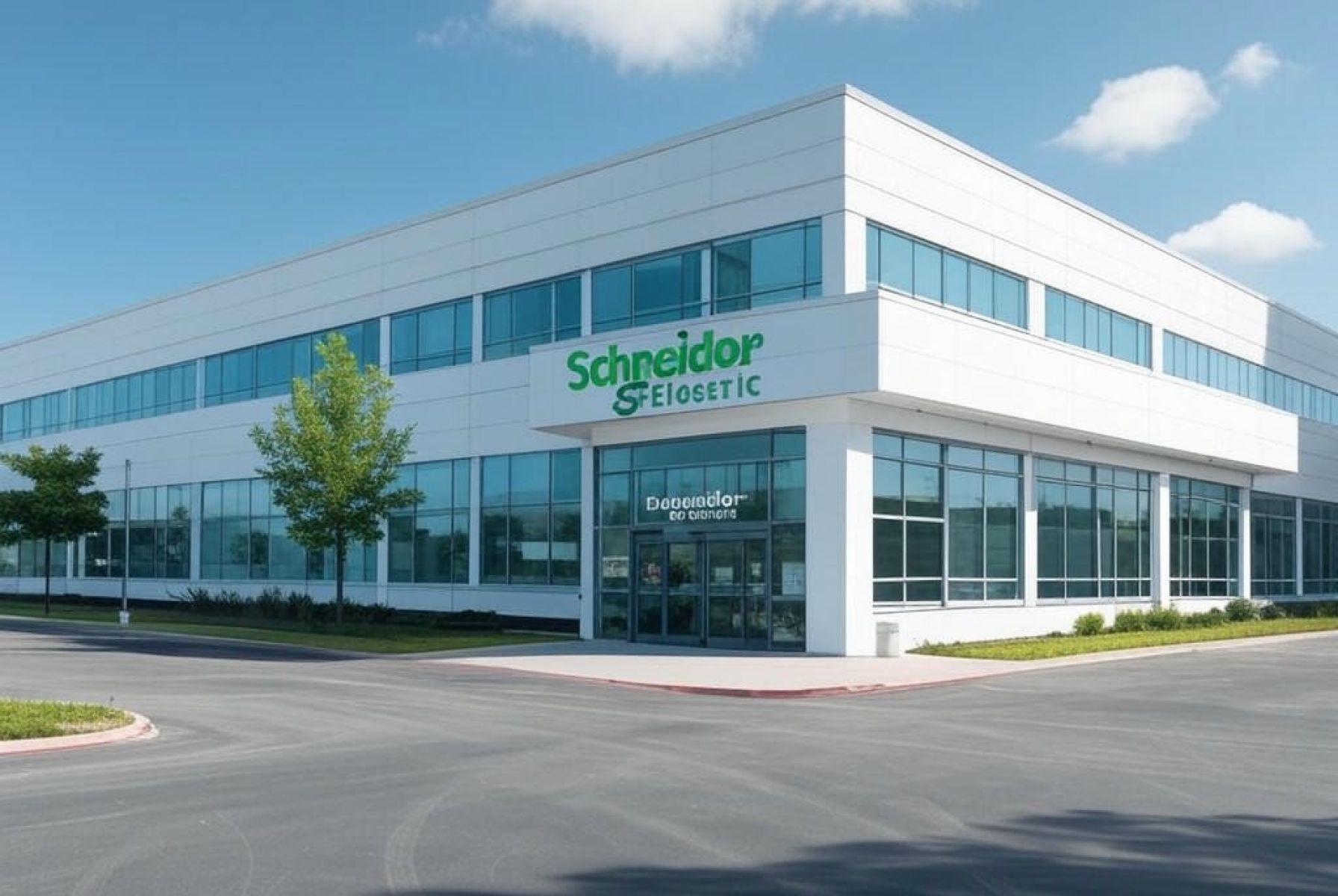- Schneider Electric’s $40 million investment initiative is transforming U.S. manufacturing through digitalization and automation.
- The initiative is not only technological but also aims at building a sustainable future and strengthening supply chains.
- Over 1,000 new jobs will be created, focusing on inclusivity by engaging veterans and retired service members.
- Artificial intelligence is a key driver, reshaping industries and requiring agile, visionary planning.
- Aamir Paul highlights the importance of responding to rapid AI growth and energy innovations.
- The expansion serves as a global model for integrating human potential with cutting-edge innovation.
- The initiative underscores the urgent need for companies to invest in future progress today.
A quiet revolution brews on American soil as Schneider Electric rolls out a sweeping investment initiative designed to transform the landscape of manufacturing. In a bold gesture of confidence, the company is not just expanding but reimagining an industry poised at the edge of a digital Renaissance.
With more than $40 million earmarked for upgrades, expansions, and state-of-the-art facilities across the United States, Schneider Electric is heralding a new era of digitalization and automation. This bold investment strategy isn’t just about technology for technology’s sake; it’s about creating opportunities and building a sustainable future.
Imagine factory floors humming with the orchestral precision of automated systems, where efficiency and innovation dance in tandem. The commitment by Schneider Electric to bolster supply chains signals more than just economic vitality—it’s an investment in the country’s industrial backbone, designed to meet skyrocketing demands for energy and technology. This is the dawn of a pivotal moment for U.S. manufacturing.
At the heart of this transformation lies a workforce evolution. Schneider Electric’s strategy to create over 1,000 new jobs doesn’t just stop at numbers. It extends a welcoming hand to veterans and retired service members, integrating their discipline and leadership into roles spanning engineering, technical analysis, and beyond. This move not only strengthens the community but underscores a dedication to inclusivity and diversity in the workplace.
The pulsating force behind this initiative is the surge of artificial intelligence, setting the stage for advances that promise to reshape industries. Aamir Paul, who presides over North American operations, emphasizes the imperative need for agility and visionary planning to navigate these technological currents. The opportunity to lead in a landscape defined by rapid AI growth and energy innovation is now, and action is the currency of change.
Schneider Electric’s expansion illustrates an inspiring blueprint for companies worldwide: blend cutting-edge innovation with pragmatic action, all while investing in human potential. This strategy reinforces our interconnectedness, proving that industry and community can thrive together.
In embracing the future, Schneider Electric is not only setting itself up as a leader but also lighting a beacon for others to follow. As digital and industrial sectors increasingly converge, companies that choose action over hesitation will forge a legacy that redefines progress for generations. The message is clear: The time to invest in tomorrow is today.
The Rise of Smart Manufacturing: Schneider Electric’s Bold Investment Sparks a New Era
Introduction
Schneider Electric’s recent announcement of a $40 million investment in U.S. manufacturing exemplifies a significant shift towards embracing digitalization and sustainability. This strategic move aims not just to advance technology but also to create a sustainable future and invigorate job growth, especially among veterans and former service members.
How-To: Optimize Manufacturing with Schneider Electric’s Approach
1. Adopt AI and Automation Technologies: Utilize the latest in artificial intelligence to enhance operational efficiency and predictive maintenance.
2. Integrate Sustainable Practices: Incorporate eco-friendly initiatives to reduce carbon footprints in manufacturing processes.
3. Focus on Workforce Diversification: Prioritize inclusive hiring practices, especially targeting veterans to leverage their skills in leadership and technical roles.
Real-World Use Cases
Schneider Electric’s initiative is aimed at transforming factories into smart manufacturing hubs. Some practical examples include:
– Smart Grids: Using IoT devices and AI for better energy management and real-time monitoring.
– Automated Production Lines: Enhancing speed and precision, cutting down on human error, and improving safety.
Market Forecasts & Industry Trends
By 2030, the global smart manufacturing market is expected to reach $506.33 billion (Fortune Business Insights). Schneider Electric’s investment aligns with growing trends in digital automation and eco-sustainability, making U.S. manufacturing competitive on a global scale.
Pros & Cons Overview
Pros:
– Increase in Job Creation: Over 1,000 new jobs enhance economic stability and community growth.
– Leadership in Eco-Sustainability: Aligns with global environmental goals, reducing business footprints.
– Enhanced Operational Efficiency: Automation reduces downtime and increases productivity.
Cons:
– Initial Cost and Implementation: High upfront investment and training costs.
– Security Concerns: Increased reliance on technology heightens cybersecurity risks.
Expert Insights and Predictions
Aamir Paul, who leads North American operations, emphasizes the necessity of agility and strategic planning to stay ahead of AI-driven changes. Companies that follow such models are likely to lead in a world where digital and industrial sectors increasingly converge.
Actionable Recommendations
1. Invest in Training: Companies should prioritize upskilling employees to adapt to new technologies.
2. Build Resilient Infrastructure: Secure IT infrastructures to prevent cyber threats.
3. Foster Collaborative Innovation: Encourage partnerships across industry sectors for shared technological advancements.
Related Links
For more information, visit Schneider Electric.
By adopting these strategies and embracing the future of digital transformation, businesses not only prepare themselves for current challenges but also position themselves as leaders in the rapidly evolving manufacturing landscape.














